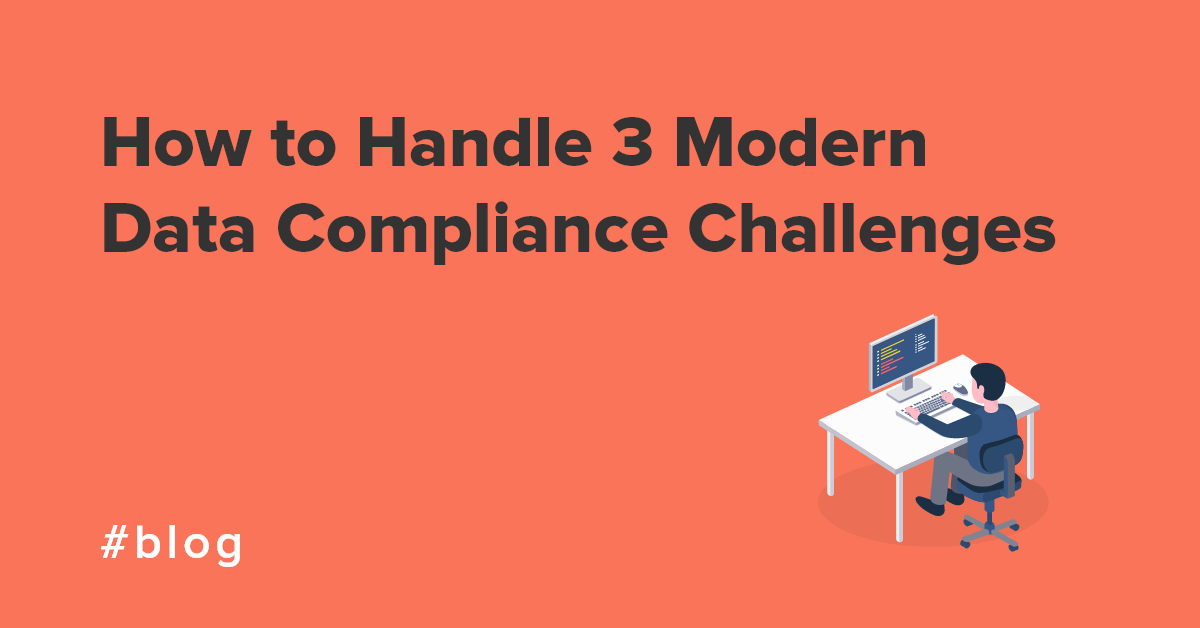As your data grows, so do your modern data compliance challenges.
Stringent regulations, such as the General Data Protection Regulation (GDPR) in Europe and the California Consumer Privacy Act (CCPA) in California, mean that the penalties for failing data compliance are large.
Effectively handling data challenges will also protect your brand, improve your decision making, and improve your finances as you reduce redundant processes.
So, is your business ready to handle all the modern data compliance challenges it needs to?
If not, don’t despair – we’ve assembled a guide to help you fill in the blanks and enhance your data governance program.
1. Dogged by documentation
The volume and complexity of documentation needed to stay compliant creates a time-consuming, administrative headache that you can’t afford to get wrong. What’s worse is that the list of documentation requirements seems to grow ever-longer, and includes:
- Privacy notices
- Consent forms
- Protocols
- Self-assessments
- Government filings
- Records of Processing Activities (ROPA)
To navigate this ocean of documentation, you’ll first need to understand who is responsible for conducting or creating each document. For documentation pertaining to the GDPR, this could be your Data Protection Officer or controller.
More than this, you’ll need to follow standardized checklists and clear business processes to ensure standards are always met. These standardized processes will also prevent know-how leaving your business, should an employee leave.
2. More data, more problems
As your business evolves, the scale of data you handle will inevitably increase. This causes more problems for your data governance team such as data silos, duplicated data, and confusion around what key terms mean.
To ensure you don’t fall under the weight your data, you’ll need to mature your data strategy and processes. It’s best to eat the frog now before the problem becomes even bigger.
One method that will provide some consistency and transparency into your processes is data modeling. Data modeling supports your data strategy in the following ways:
- It builds an overview of all your data and connected sources. This improves transparency, helps data governance, reduces duplication and empowers you to handle the growing data variety.
- It establishes shared definitions for data, helping to build a bridge between technical and business teams.
- It creates company-wide, standardized data models which prevent different teams handling data in different ways.
These benefits make handling data – throughout its lineage – easier. Additionally, data models allow you to easily track data from its source, helping you to remain compliant.
3. Dirty data
Not only can bad data directly cause you to fail your audit, it will also cost your business in other ways, such as reducing the accuracy of business insights drawn from your data.
But unfortunately, businesses often find themselves between a rock and a hard place. Either they endure dirty data, or ask their already over-stretched IT teams to spend long hours manually cleaning their data.
To ease the process, try automatically cleaning data at the point of entry. It reduces error, cuts costs, and frees-up the time of your IT team.
Have confidence: Compliance made easy
‘In today’s digital economy, with its increasing vulnerabilities and regulations around data, how your business information is stored, accessed and protected must be an essential piece of your business strategy.’
Paul Nashawaty, Chief evangelist and global product strategy at HYCU
Gaining control of documentation, using data models, and keeping data clean will all help you maneuver through the minefield of compliance challenges.
But these changes aren’t a quick-fix your IT team can deliver in-between coffee breaks. It takes time and persistence to keep your data compliant.
However, by adapting the ways you work and how your data is tracked, processed and defined throughout your organization, you’ll find modern data compliance less challenging. It’s all about working smarter, not harder.
Using data models is one solution that can help. And, with the right guidance, you can make them highly practical and easily turn your models into actionable runtime processes. It’s another tool in your arsenal so you can sail through compliance challenges with confidence.









